One might think that as an ethnic Chinese, I would have no problem living in China (lol). My Chinese grades would attest to this, but my spoken language is horrendous. Besides, which foreigner isn’t a little intimidated by the country. Before you get all ideological, I am referring to China’s unique diversity, lifestyle, and ecosystem of apps that govern social media, payments, transport, etc. Shanghai


Shanghai- home for the next 10 weeks! I was in town for a summer internship, but spent the first three weeks settling visa issues. The visa office took my passport, so I was confined to Shanghai for a while (foreigners need their passports even for non-air domestic travel). As a result, I became so familiar with the city that I knew the locations of all 19 exits at People’s Square (人民广场) metro station by heart.
Side note: I plan my visits according to location, so I grouped notable attractions by their proximity to each other below, instead of the conventional categorical lists. Crazy, I know.
Navigating People's Square metro station
Home to three metro lines, People’s Square is the largest and busiest metro station in Shanghai. Take exits 7 or 19 to start your walk along Nanjing Road Pedestrian Street (南京路步行街), one of the world’s busiest shopping districts. Closeby, take exit 3 for the Shanghai Urban Planning Exhibition Centre (上海城市规划展示馆). The top floor has nice views of People’s Park and downtown, plus the entrance fee is only RMB15 if you show a student card. Otherwise, unless you are very passionate about Shanghai’s urban planning history, go when you run out of things to do. Public service announcement: most museums in China are closed on Mondays.


Next, take exit 1 to get to Shanghai Museum (上海博物馆). This was one of the first places where my patience was tested, due to the sheer number of people in line. Don’t get me wrong, I am completely fine with standing in a long queue (my compatriots are famous for it). However, it becomes a problem when the principle of queueing up falls apart, and people blatantly cut the line or squeeze to the front. It’s therefore quite ironic that I solo-ed for the most part in China, when I should have gone with others just to overcome the queues.
Judgement aside, it really is quite different growing up in the megacity of Shanghai. People race for a place in everything: the metro, school, workforce, tourist attraction, etc. Back on a cheerier note, entrance is free, and you could easily spend more than half a day here. But try to go earlier though, you know, because of the queue.
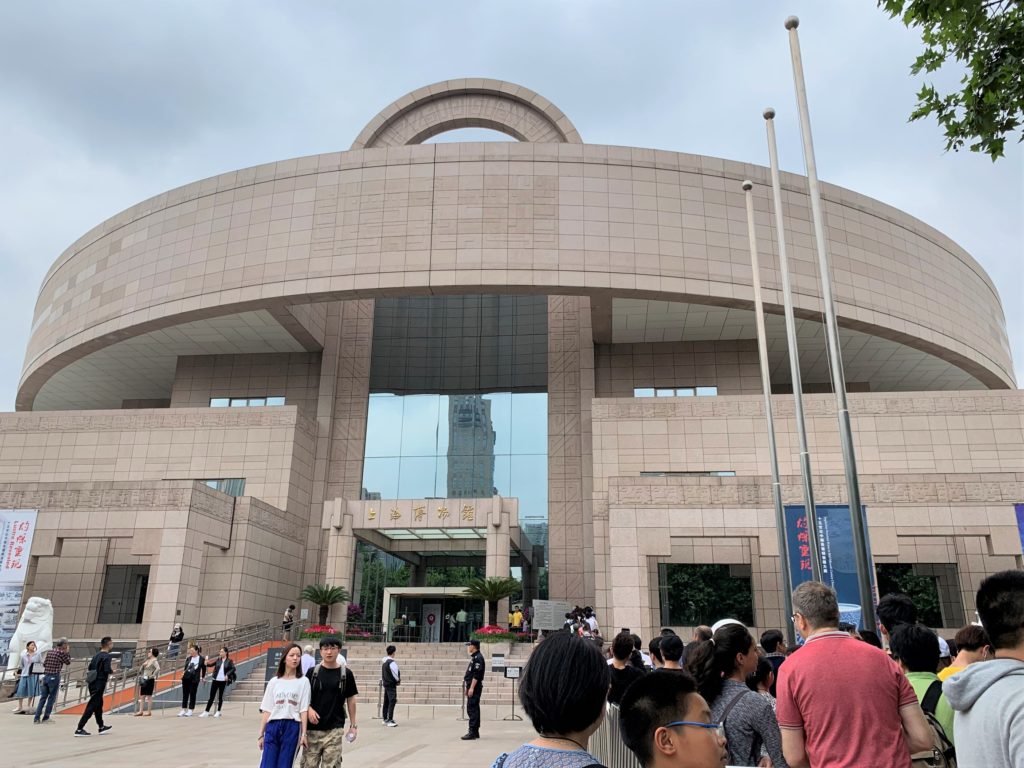
Take exit 16 to get to the main entrance of People’s Park (人民公园). The Museum of Contemporary Art (MOCA) is for some reason very well hidden inside. A must-see when you are in town on weekend afternoons is the Marriage Market in People’s Park. In a large section of the park, the pathways will be lined with umbrellas with adverts stuck on them. Usually, elderly parents mend their umbrella booths, and their children’s details would be written on the advert, eg. age, gender, height, weight, occupation, strengths, ideal partner type, etc. There is even a sub section for children of foreign nationalities. Parents go shopping for a spouse for their single children and exchange contact details with each other. Another PSA perhaps: if you are a young Chinese female observing, you might arouse interest from some of the parents.

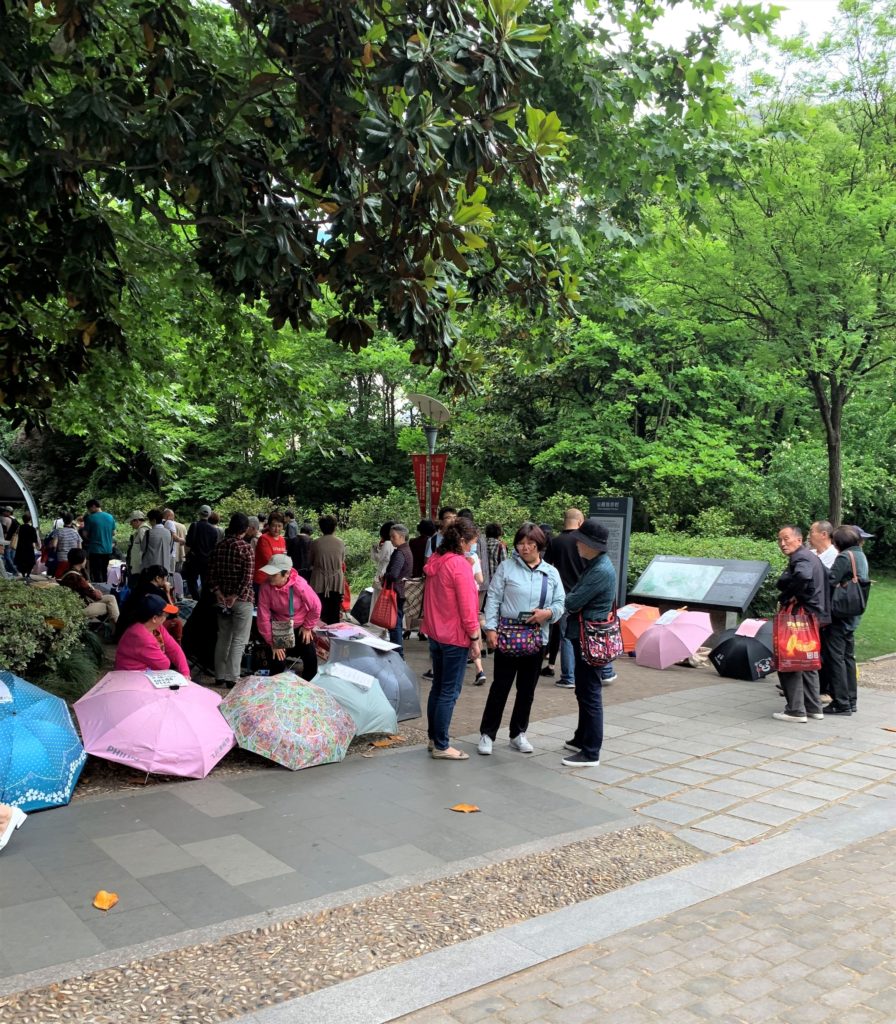

Moving on, take exit 15, get out of Raffles City (上海来福士广场), aye Singapore represent, to get to Fuzhou Road (福州路). This road runs parallel to the more famous East Nanjing Road, but also has its own gems. It is filled with mom-and-pop stores selling stationery, notebooks, art materials, and other bric-a-brac stuff. Walk for about 10 minutes to reach Shanghai Bookstore (上海书城) on the right. You won’t miss it; it’s kinda huge. Book lovers, rejoice! If you can read them, Chinese books are unbelievably affordable. The ones I got were in the range of RMB30 for an average fiction softcover. Unfortunately, books in other languages, or books translated into Chinese from other languages, are more costly.

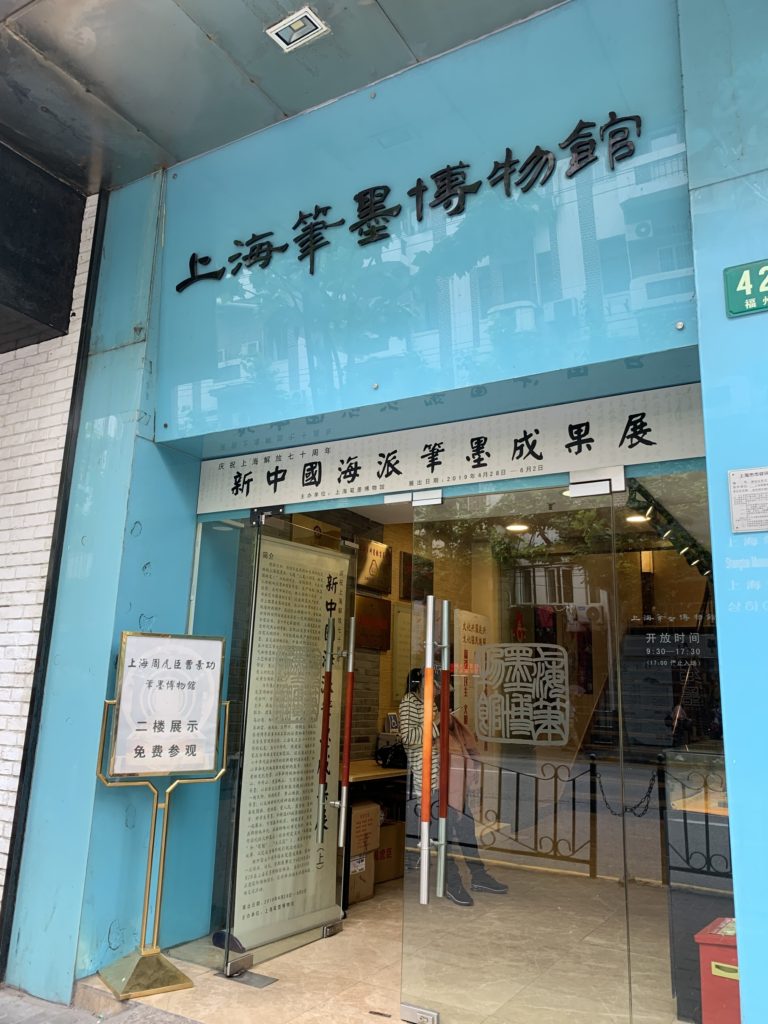
A few metres further down Fuzhou Road is the Shanghai Brush and Ink Museum (上海笔墨博物馆). There isn’t much to see, I only went in because it was free. However, if you are a fan of calligraphy and the brushes and ink used to achieve it, go crazy. Opposite this is the Foreign Languages Bookstore (上海外文书店). It has a good selection of books and fancy stationery.
Nanjing Road- West to East, everything in between and at the ends
For some reason I also walked the entirety of West to East Nanjing Road, because I was already at Jing’an Temple (静安寺) and I didn’t want to take three metro stations to the Bund. Yeah I have something against paying for transportation. However, I do love planning walks because you discover things that you would not have otherwise sought out before. For instance, Starbucks lovers, rejoice! There is a huge Starbucks Reserve Roastery on West Nanjing Road. Inside is two levels of trippy stuff, like the coffee beans version of Willy Wonka’s chocolate factory. Also, contrary to official Chinese travel websites on Google, TripAdvisor was right in that the entrance fee to Jing’an Temple is RMB50, and not half of that.


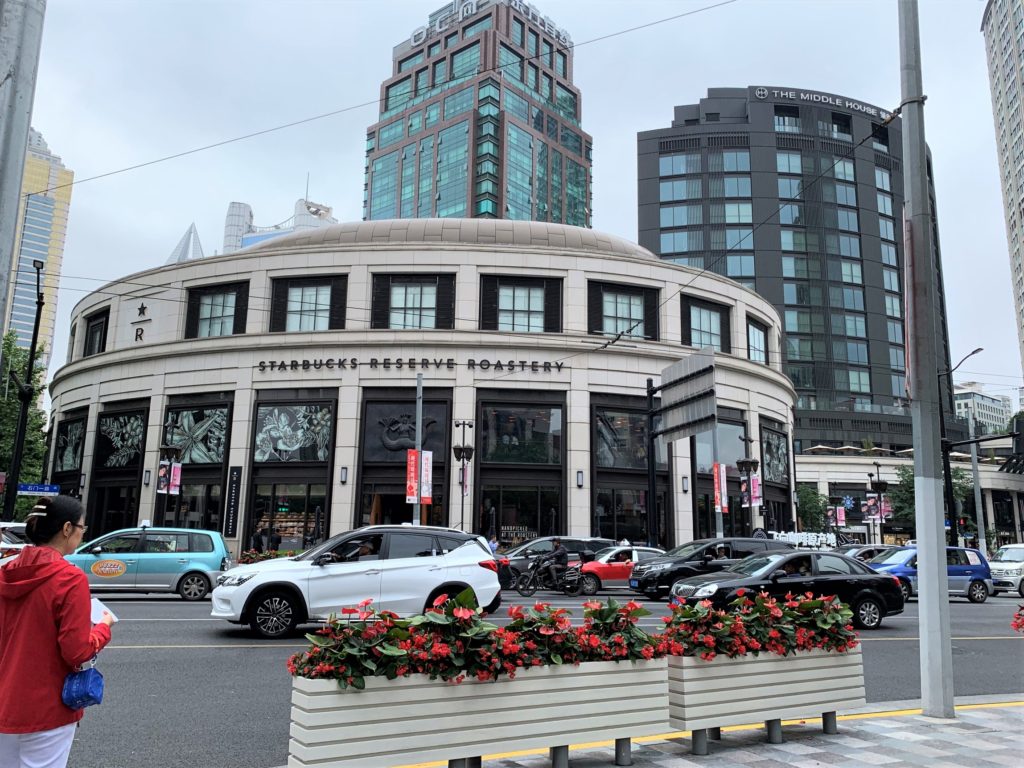

Ahh, finally the legendary Bund (外滩); probably why people visit Shanghai in the first place. If you are taking the metro, alight at East Nanjing Road station (南京东路), exit 7 and walk straight along the main shopping street. If you get lost, just look up for the red ball of the Oriental Pearl TV Tower (东方明珠) and follow it.


The above is the actual Bund, not the sparkly skyscrapers (below), which is the Lujiazui Financial District (陆家嘴) directly on the opposite bank of the Huangpu River. Fun fact: the Oriental Pearl Tower was the tallest structure in China until the Shanghai World Financial Centre overtook it in 2007. Furthermore, the latter is so tall that it regularly punctures through clouds.

Pro-tip: if you don’t want people appearing in your Bund photos (trust me, there are A LOT of people, seemingly there ALL the time), turn left when you first reach the river. Then walk for about 15 minutes until you reach the Monument to the People’s Heroes (上海市人民英雄纪念塔). The Bund History Museum is also located there and has free entry, unless I was mistaken for staff. And voila, you have the view to yourself with the Oriental Pearl Tower at the centre of it. I also recommend visiting again at night.

The evening view of the skyscrapers putting on a lightshow is much more spectacular than in the smoggy daytime. (Edit: a year later, they’re now putting on drone shows)


As mentioned at the bottom of every page, my travel budget is shoestring. Hence my trips up the Oriental Pearl Tower and the Huangpu River cruise, both sickeningly touristy, were kindly sponsored by my school, hurhur.



Other attractions in Shanghai
To see traditional Chinese architecture in downtown Shanghai, head to Yu Garden (豫园). Yu Garden metro station is a walk from the attraction, but you will be entertained by RMB2 shops selling cheap souvenirs along the way (you can infer the quality from the price).


Get used to the new type of shoulder-bumping kind of packed at Yu Garden. Otherwise, there are literally hundreds of other less crowded, well-preserved Water Towns in places like Suzhou and Hangzhou. Huangshan is also famous for its Xidi and Hongcun villages, but sadly I did not visit due to time and budget constraints.
Here is one right on the edge of Shanghai province: Fengjing Ancient Town (枫泾古镇). Amongst the maze of traditional houses is a disguised Starbucks, or 星巴克. Damn you, globalisation.


The blue skies may look nice here, but summers in Shanghai (and later I found out everywhere in China) are especially scorching. You can usually identify the locals and non-locals; the former will be donned in sunglasses, scarfs, sunhats and umbrellas. Meanwhile I have accepted that I am naturally tanned, but I do regret the jarringly obvious tan lines halfway down my arms. So splat on that sunscreen!

For more old-school architecture nearer to downtown Shanghai, head to Tianzifang (田子坊). By metro, the nearest station is Dapuqiao (打浦桥), take exit 1. For all you hipsters, this place has cafes, arthouses and tasteful souvenirs. Feel free to get lost in the labryinth.
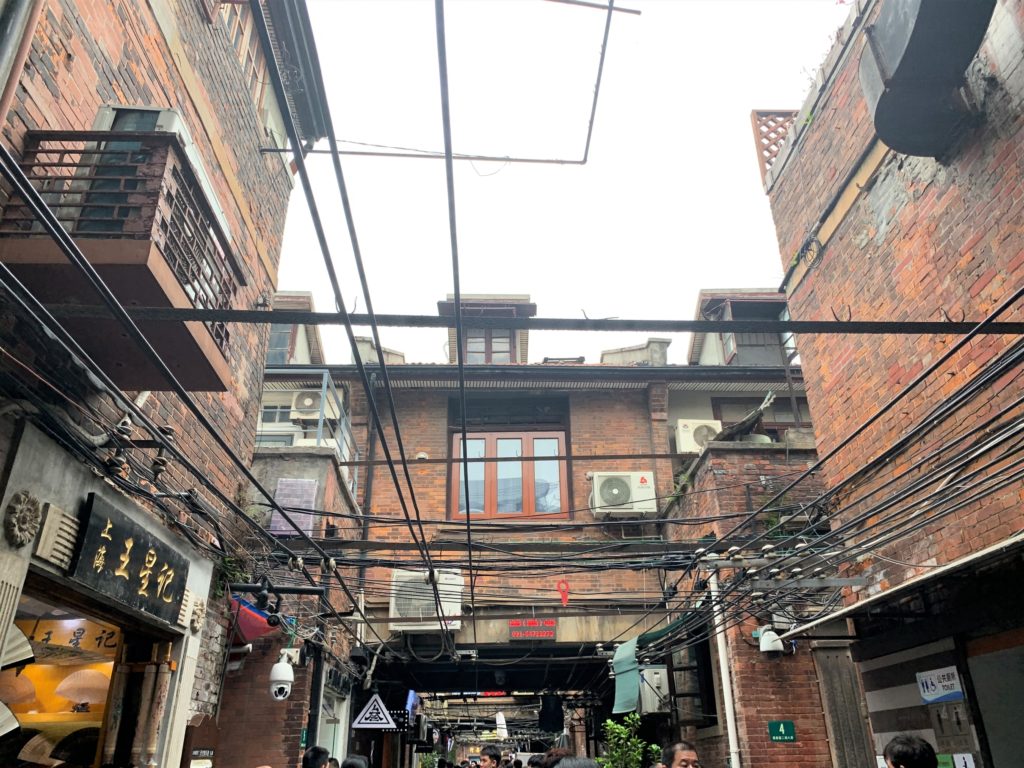

Tianzifang is part of the French Concession, an area in Shanghai formerly designated for the French (duh). I thought that it was a specific location I could find and take pictures of, but it isn’t, it is just a large area in Shanghai. Another famous spot in the French Concession is Xintiandi (新天地). Xintiandi Beili (新天地北里) is where the expats go for expensive restaurants and bars, so much so that it does not feel like China. Even the ground is cobblestone and pedestrian only, very European. Its nearest metro station is Xintiandi, take exit 1 and walk out of the mall. It is two major junctions away, so not exactly next door.
Next, my favourite museum in Shanghai operates from the basement of a dingy apartment complex, and I’m not even trying to make it sound cool. It is a wonder how the Shanghai Propaganda Poster Art Centre (上海宣传画艺术中心) is even allowed to be in business. Entry is RMB25. The nearest metro station is Shanghai Library (上海图书馆), which is still a full 20 minute walk away. Key the name into Baidu Maps and not Google Maps, I repeat, not Google Maps (I’m an idiot). Google Maps will ask you to climb over a stone wall. Unfortunately there is a strict no photos policy (that figures), so here is a photo of Shanghai Library instead.


Although China Art Museum (中国艺术宫) is a little out of the way, it is served by its own metro station. Entry is free, and in my opinion, so worth your non-existent buck. Often, Chinese painting does not get enough attention in international media.
Lastly, you have to visit the Shanghai Muslim Market if you are in town on Fridays. I read that the market opening hours are quite fickle, and on some Fridays they may not open at all. But please try your luck and visit in the early afternoon. The nearest metro station is Changshou Road (长寿路), take exit 2. Then walk along the main road for 10-15 minutes in the direction of Huxi Mosque (沪西清真寺) and keep a look out for the red tarpaulin sheets on your right on Aomen Road (澳门路).


Most of the stalls are mended by Muslim Uighurs who are from the north western province of Xinjiang. Their cuisine is more similar to that of Central Asia (shoutout, I sound more excited in my Central Asia posts too). Food lovers should definitely visit.
Conclusion
And there you have it! My recommendations of places to visit in Shanghai. I left out a lot of others, like Mao Ze Dong’s former residence, Qipu Road clothing market, A.P. Plaza, Shanghai Circus, etc, only because there are too many places to list. So go forth and conquer!

Hi! I am Joey, a University student from Singapore, attempting to show my appreciation for the world’s most powerful passport by literally milking its visa-free benefits one country at a time. I describe my travel budget as shoestring and travel style as audacious.

Shi Min
Your adventures never fail to impress me! 👍 Amazinggggg 🤩
joey.is.msadventuring
Thank you kindly! YOU never fail to impress me;)